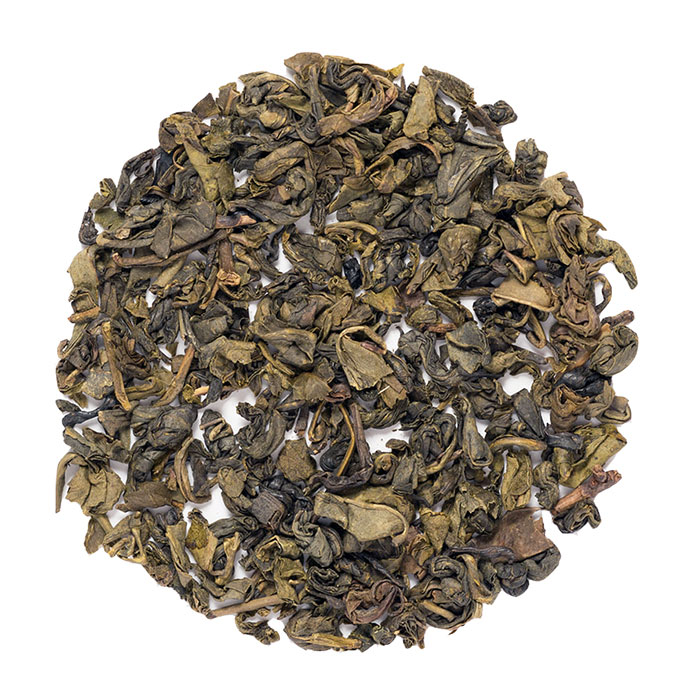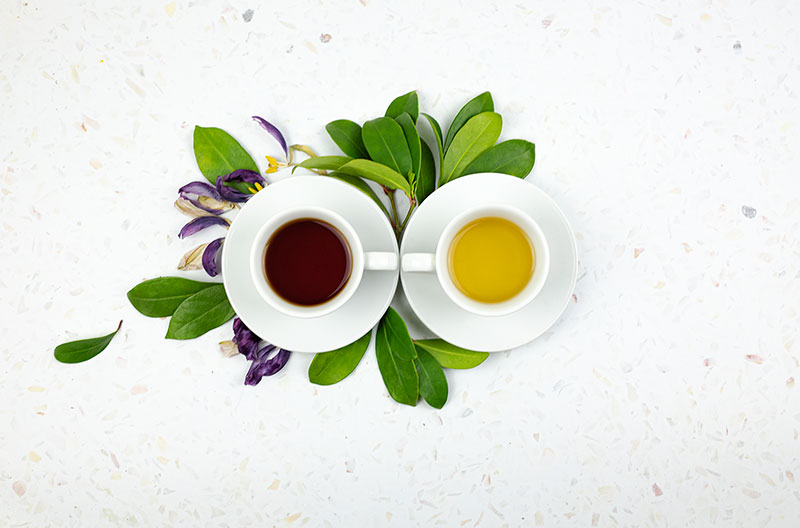Earl Grey Tea vs Green Tea Benefits
If you are a passionate tea drinker, choosing which tea to buy or drink may be more difficult than it sounds. Which one is healthier? Which one has more caffeine? And antioxidants? Which one is better for the morning? We decided to compare two of the most popular teas every tea lover tries at least once in life. Learn which tea is better – Earl Grey or green tea.
Which is better: green tea or earl grey?
Earl Grey and green tea are both made from a plant called Camellia Sinensis. The main difference is in the production process. While green tea is an unoxidised tea, black tea is fully oxidized. Oxidation changes both chemical composition and flavor, and gives a dark red or orange color to tea.
The legend has it that tea was first discovered about 5000 years ago by the father of Chinese Medicine Shen Nong. True or not, it took many years until the actual production started. The first real written evidence of green tea appeared more than 1000 years ago. Earl grey, on the other hand, is much younger. It was first produced in the early 19th century, but since became a staple in many households. Green tea is one of the most popular tea types in China, while Earl Grey is more popular in the western countries.
There are thousands of different green teas today, each with a different flavor, nutrient content, color, leaf appearance and scent. But there are also many Earl Grey teas too – green, black, herbal, oolong and even pu’erh. Green tea is one of the main 6 tea types, while the Earl Grey can be a subtype of any type of tea. Why? What makes an Earl Grey Earl Grey is the addition of bergamot essential oil, that gives a recognizable citrus scent to this blend. Earl Grey can be blended with different black teas, and there is no official rule how that would specify the strict type.
Both Earl Grey and green tea are very versatile teas and you can use them in many other fun ways too. If you want to include tea into cakes and drinks recipes, choose those with stronger flavor. The strong scent of bergamot makes Earl Grey a great choice for baking and making lattes.
Earl Grey vs Green Tea FAQ
Does earl grey or green tea have more caffeine?
Generally, Earl Grey is likely to have more caffeine than green tea. Earl Grey will probably have around 30-60 mg of caffeine per cup. Some green teas may also have a very high amount of caffeine. Expect around 20-60 mg per cup, but on average, the amount is likely to be around 20-30 mg.
Broken tea leaves in tea bags will have more caffeine than unbroken loose leaf tea, but the unbroken loose leaf tea is likely to have more antioxidants and L-theanine, and provide more health benefits. Read more about caffeine in Earl Grey tea here.
Are there tannins in green tea or earl grey tea?
Both tannins and catechins are polyphenols and may provide many benefits for health. Polyphenols are types of antioxidants, and that’s why both tannins and catechins will provide anti oxidative properties. They are both water-soluble and released into your cup when you steep tea in hot water. Green tea usually has more catechins, while black tea will have more tannins. However, every tea is different, and it’s impossible to know the exact amount without testing.
How much antioxidants are there in Earl Grey or green tea?
Although both both black and green tea are healthy, green tea has much more EGCG and L-theanine than black tea. EGCG is the most important catechin in tea, often linked to weight loss[1], preventing cancer and boosting immune system. L-theanine is an amino acid responsible for calming effect and influencing mood. In black tea, the most important compounds are theaflavins, a form of catechin that changed during oxidation process[2]. Theaflavins give darker color to black tea leaves.
One study showed that green tea offers a better antioxidant activity than green tea[3]. Antioxidants help fight free radicals that cause damage to cells, cause aging, cancer, brain and heart disease[4]. However, to achieve most of the benefits, it’s recommended to drink 3-5 cups of tea per day, for a longer period of time.
Which tea is better for morning?
Because of the similar caffeine content, both teas may provide an energy boost in the morning. However, a cup of black tea may give you just a bit more. But, Earl Grey is not just a regular black tea. It’s scented with bergamot, an essential oil that may be one of the best natural oil for a mental well-being[5]. On the other hand, because of L-theanine, green tea may provide calming and mood boosting effect. Remember to enjoy the scent of dry leaves after placing them in the preheated teapot.
Earl Grey Green tea: best of both worlds!
And here comes the most interesting part – Earl Grey can be made with green tea too. Because today Earl Grey is not necessarily black, it’s possible to achieve the same intense, citrus flavor by scenting green tea leaves with bergamot essential oil too. Not all green teas can be used for making green Earl Grey. It’s important that the tea base is strong enough to hold the scent and flavor of this unique essential oil. One of them is the Chinese Gunpowder, a stronger green tea with leaves shapes in small pellets. Earl Grey is traditionally drank with sugar and milk, and Gunpowder tea is one of rare green teas that go well with almost any condiment.

Green Earl Grey tea
Caffeine Content
Green tea generally has less caffeine than black tea, but some green teas may have more caffeine than black teas. Gunpowder usually has more caffeine than other green teas, which makes it ideas for an Earl Grey base. Expect around 30-40 mg of caffeine per cup. To get the most caffeine brew for 2-3 minutes with a water temperature of around 176°F. The longer you brew it, the more caffeine you will extract. Although many green teas would be ruined with long steeping time, gunpowder is different and will give a strong infusion perfect for a morning energy boost.
Flavor
Green Earl Grey is fresher and lighter than the black Earl Grey, with a touch of sweetness and light smokiness. Because it’s also scented with bergamot oil, it has a recognizable Earl Grey flavor too. This tea is best drank without milk, but if you make a stronger cup, milk and sugar may blend in well.
Disclaimer: This article is for informational purposes only. It’s not intended to replace medical advice, diagnosis or treatment. Every person is different and may react to different herbs and teas differently. Never use teas or herbs to treat serious medical conditions on your own. Always seek professional medical advice before choosing home remedies.
References
[1] https://www.ncbi.nlm.nih.gov/pmc/articles/PMC6099746/
[2] https://academic.oup.com/jn/article/131/9/2248/4687692
[3] https://academic.oup.com/jn/article/132/4/785/4687401




